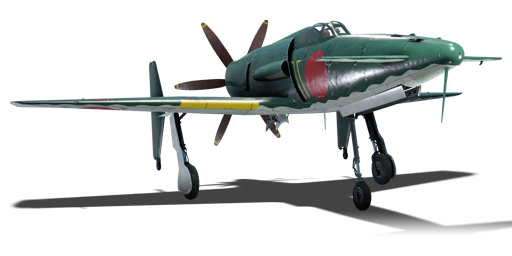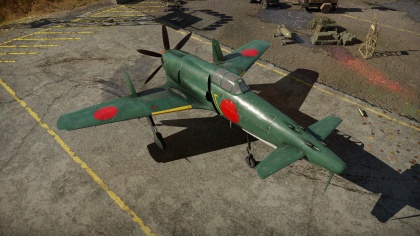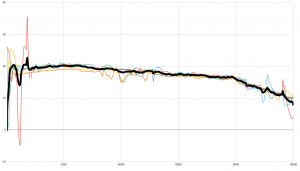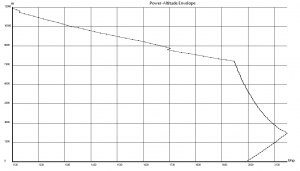Difference between revisions of "J7W1"
Inceptor57 (talk | contribs) (Edits, Readded section descriptions as comments) |
(Added roughly 40% more information with my own data based on localhost:8111 analysis. Added a few figures of G loading, max speeds, descriptions and graphs of engine power and altitude climb speed in m/s. Loads of information that is valuable.) (Tag: Visual edit) |
||
| Line 2: | Line 2: | ||
== Description == | == Description == | ||
| − | <!--In the description, the first part needs to be about the history of and the creation and combat usage of the aircraft, as well as its key features. In the second part, tell the reader about the aircraft in the game. Insert a screenshot of the vehicle. If the novice player does not remember the vehicle by name, he will immediately understand what kind of vehicle it is talking about.--> | + | <!--In the description, the first part needs to be about the history of and the creation and combat usage of the aircraft, as well as its key features. In the second part, tell the reader about the aircraft in the game. Insert a screenshot of the vehicle. If the novice player does not remember the vehicle by name, he will immediately understand what kind of vehicle it is talking about.-->The J7W1 Shinden is a '''bomber interceptor''' designed to make quick work of raiding bomber aircraft. It has exceptional performance at altitude, more than exceptional aramament and a decent climb rate. Double the weight of a fully loaded A6M, and definitely heaps faster to make up for it. '''This aircraft thrives with boom and zoom''', and has a '''great energy retention''' at speed due to sleak aerodynamics. Inherently less stable than a normal tail plane thanks to a rear mounted engine push thrust configuration canard design, it is known for '''rapid pitch angle changes''', great roll rate and less drag, by design. The flap system does not work in game currently however it enhances negative G two fold, at the cost of your speed. '''The aircraft is very prone to fires''' however, a single hit to the fuel tanks will result in an inextinguishable flame that will for sure be your demise. |
[[File:GarageImage_{{PAGENAME}}.jpg|420px|thumb|left]] | [[File:GarageImage_{{PAGENAME}}.jpg|420px|thumb|left]] | ||
| Line 12: | Line 12: | ||
<!--Describe how the aircraft behaves in the air. Speed, manoeuvrability, acceleration and allowable loads - these are the most important characteristics of the vehicle.--> | <!--Describe how the aircraft behaves in the air. Speed, manoeuvrability, acceleration and allowable loads - these are the most important characteristics of the vehicle.--> | ||
| − | The Shinden has a maximum speed of | + | The J7W1 Shinden has a maximum speed of 892km/h, 558mph, 485kias (this is Vne speed - the absolute maximum speed). In a dive from service ceiling, a speed of mach 0.9 has been recorded and is sustained until IAS speed limit is reached. The aircraft can handle a max load of 11g and compresses rudder, pitch and roll at extremely high IAS speed in order of descending effect. |
{| class="wikitable" style="text-align:center" | {| class="wikitable" style="text-align:center" | ||
| Line 50: | Line 50: | ||
! RB | ! RB | ||
|- | |- | ||
| − | | ? || ? || | + | | ? || ? ||12|| ??.? || ??.? || ??.? ||20|| ??? |
|- | |- | ||
|} | |} | ||
| Line 65: | Line 65: | ||
! Arrestor gear | ! Arrestor gear | ||
|- | |- | ||
| − | | X || X || X || | + | | X || X || X |||| X <!-- ✓ --> |
|- | |- | ||
|} | |} | ||
| Line 81: | Line 81: | ||
! - | ! - | ||
|- | |- | ||
| − | | | + | |898.22||460||510|| +11 ||-6 |
|- | |- | ||
|} | |} | ||
| Line 94: | Line 94: | ||
! Radiator<br>(km/h) | ! Radiator<br>(km/h) | ||
|- | |- | ||
| − | | | + | |650||611|| 703 || > ??? |
|- | |- | ||
|} | |} | ||
| Line 108: | Line 108: | ||
! WEP Engine power | ! WEP Engine power | ||
|- | |- | ||
| − | | | + | | 28880 || 1730 ||2130 |
| + | |- | ||
| + | | | ||
| + | | | ||
| + | | | ||
|- | |- | ||
<!--! colspan="3" | Setting 2 | <!--! colspan="3" | Setting 2 | ||
| Line 127: | Line 131: | ||
|- --> | |- --> | ||
|} | |} | ||
| + | [[File:J7W1 vario over altitude.png|thumb]] | ||
| + | [[File:J7w1 power - altitude envelope.png|thumb]] | ||
=== Survivability and armour === | === Survivability and armour === | ||
| − | + | Very prone to fires, and difficult to extinguish. Armor glass (70mm) in front of pilot and steel armor plate (17mm) in front of pilot in between guns. Engine snipes common, due to the position of the engine. Wing tip damage can increase likelyhood of unrecoverable flat spins. | |
== Armaments == | == Armaments == | ||
| Line 139: | Line 145: | ||
* 4 x 30 mm Type 5 navy cannons (60 rpg = 240 total) | * 4 x 30 mm Type 5 navy cannons (60 rpg = 240 total) | ||
| + | * Shells: HEF-T, PT, P: 910m/s muzzle velocity | ||
| + | * Shells: HEF-I, HEF: 720m/s muzzle velocity | ||
| + | * Tracer: 910m/s | ||
| + | * All other belts: Mixed shell velocities, see above. | ||
=== Suspended armament === | === Suspended armament === | ||
| Line 171: | Line 181: | ||
! Type | ! Type | ||
|- | |- | ||
| − | | Controllable || rowspan="2" | | + | | Controllable || rowspan="2" |Auto(controllable)|| rowspan="2" |Auto(controllable) |
| + | | rowspan="2" |Null|| rowspan="2" |Auto(controllable)|| rowspan="2" | Not controllable || rowspan="2" | Not controllable | ||
|- | |- | ||
|} | |} | ||
| Line 214: | Line 225: | ||
* Pilot has some protection in the back from the engine. | * Pilot has some protection in the back from the engine. | ||
| − | * | + | * competetive high speed turn rate |
| − | * | + | * Good roll rate |
| + | * Amazing pitch response | ||
| + | * 4x 30 mm cannons make for some great offensive firepower. | ||
| + | * Great high speed and handling and dive. | ||
* Since the engine and propeller are located in the rear, it is not likely to take damage or catch fire from shots landing at its front. | * Since the engine and propeller are located in the rear, it is not likely to take damage or catch fire from shots landing at its front. | ||
'''Cons:''' | '''Cons:''' | ||
| − | * Slow turn rate. | + | * Slow sustained turn rate. |
| + | * High speed rudder suffers some compression | ||
* Pilot more exposed at the front. | * Pilot more exposed at the front. | ||
* Since the engine is located in the rear, it is especially vulnerable to enemies behind it. | * Since the engine is located in the rear, it is especially vulnerable to enemies behind it. | ||
* Shots to the front may damage its "tail" flaps. | * Shots to the front may damage its "tail" flaps. | ||
| + | * Armament may detonate | ||
| + | * Fuel tanks are easily flammable and do not self seal fully. | ||
== History == | == History == | ||
| Line 246: | Line 263: | ||
== See also == | == See also == | ||
''Links to the articles on the War Thunder Wiki that you think will be useful for the reader, for example:'' | ''Links to the articles on the War Thunder Wiki that you think will be useful for the reader, for example:'' | ||
| + | |||
* ''reference to the series of the aircraft;'' | * ''reference to the series of the aircraft;'' | ||
* ''links to approximate analogues of other nations and research trees.'' | * ''links to approximate analogues of other nations and research trees.'' | ||
| Line 251: | Line 269: | ||
== External links == | == External links == | ||
''Paste links to sources and external resources, such as:'' | ''Paste links to sources and external resources, such as:'' | ||
| − | * | + | |
| − | * | + | *https://forum.warthunder.com/index.php?/topic/202472-kyushu-j7w1/ [Flight model as per war Thunder forums] |
| − | * | + | * https://en.wikipedia.org/wiki/Kyushu_J7W |
| + | * https://www.reddit.com/r/Warthunder/comments/ayvvjx/j7w1_mec/ | ||
{{Japan fighters}} | {{Japan fighters}} | ||
Revision as of 07:46, 25 October 2019
Contents
Description
The J7W1 Shinden is a bomber interceptor designed to make quick work of raiding bomber aircraft. It has exceptional performance at altitude, more than exceptional aramament and a decent climb rate. Double the weight of a fully loaded A6M, and definitely heaps faster to make up for it. This aircraft thrives with boom and zoom, and has a great energy retention at speed due to sleak aerodynamics. Inherently less stable than a normal tail plane thanks to a rear mounted engine push thrust configuration canard design, it is known for rapid pitch angle changes, great roll rate and less drag, by design. The flap system does not work in game currently however it enhances negative G two fold, at the cost of your speed. The aircraft is very prone to fires however, a single hit to the fuel tanks will result in an inextinguishable flame that will for sure be your demise.
The J7W1 Shinden is a Rank IV Japanese fighter
with a battle rating of 5.7 (AB/SB) and 6.0 (RB). This aircraft was introduced in Update 1.43.
General info
Flight Performance
The J7W1 Shinden has a maximum speed of 892km/h, 558mph, 485kias (this is Vne speed - the absolute maximum speed). In a dive from service ceiling, a speed of mach 0.9 has been recorded and is sustained until IAS speed limit is reached. The aircraft can handle a max load of 11g and compresses rudder, pitch and roll at extremely high IAS speed in order of descending effect.
| Characteristics | |||||||
|---|---|---|---|---|---|---|---|
| Stock | |||||||
| Max Speed (km/h at 8,500 m) |
Max altitude (meters) |
Turn time (seconds) |
Rate of climb (meters/second) |
Take-off run (meters) | |||
| AB | RB | AB | RB | AB | RB | ||
| ? | 703 | 12500 | ??.? | 32.2 | ??.? | 15.3 | 650 |
| Upgraded | |||||||
| Max Speed (km/h at 8,500 m) |
Max altitude (meters) | Turn time (seconds) | Rate of climb (meters/second) |
Take-off run (meters) | |||
| AB | RB | AB | RB | AB | RB | ||
| ? | ? | 12 | ??.? | ??.? | ??.? | 20 | ??? |
Details
| Features | ||||
|---|---|---|---|---|
| Combat flap | Take-off flap | Landing flap | Air brakes | Arrestor gear |
| X | X | X | X | |
| Limits | ||||
|---|---|---|---|---|
| Wing-break speed (km/h) |
Gear limit (km/h) |
Combat flap (km/h) |
Max Static G | |
| + | - | |||
| 898.22 | 460 | 510 | +11 | -6 |
| Optimal velocities | |||
|---|---|---|---|
| Ailerons (km/h) |
Rudder (km/h) |
Elevators (km/h) |
Radiator (km/h) |
| 650 | 611 | 703 | > ??? |
| Compressor (RB/SB) | ||
|---|---|---|
| Setting 1 | ||
| Optimal altitude | 100% Engine power | WEP Engine power |
| 28880 | 1730 | 2130 |
Survivability and armour
Very prone to fires, and difficult to extinguish. Armor glass (70mm) in front of pilot and steel armor plate (17mm) in front of pilot in between guns. Engine snipes common, due to the position of the engine. Wing tip damage can increase likelyhood of unrecoverable flat spins.
Armaments
Offensive armament
The J7W1 is armed with:
- 4 x 30 mm Type 5 navy cannons (60 rpg = 240 total)
- Shells: HEF-T, PT, P: 910m/s muzzle velocity
- Shells: HEF-I, HEF: 720m/s muzzle velocity
- Tracer: 910m/s
- All other belts: Mixed shell velocities, see above.
Suspended armament
The J7W1 can be outfitted with the following ordinance:
- Without load
- 2 x 60 kg Navy Type 97 Number 6 bombs (120 kg total)
- 4 x 60 kg Navy Type 97 Number 6 bombs (240 kg total)
Usage in battles
The Shinden is armed with 4 30 mm frontal cannons, making it quite the slugger. Due to its slow turn time, it is usually best for the pilot to engage enemy fighters head-on, or from above and behind since usually, a single burst of shots can easily knock even heavy bombers out of the sky. Regarding fire from bomber gunners and head on engagements, the plane's armour enables it to take some beating to the wings, but the pilot is heavily exposed from the front. Should this plane be forced into a turning fight, it will almost certainly lose since its BR means it will face up against faster-turning Spitfires and P-51Ds. Its speed might be used to its advantage in order to retreat or gain some distance before attempting to initiate head-on combat.
Manual Engine Control
| MEC elements | ||||||
|---|---|---|---|---|---|---|
| Mixer | Pitch | Radiator | Supercharger | Turbocharger | ||
| Oil | Water | Type | ||||
| Controllable | Auto(controllable) | Auto(controllable) | Null | Auto(controllable) | Not controllable | Not controllable |
Modules
| Tier | Flight performance | Survivability | Weaponry | ||
|---|---|---|---|---|---|
| I | Fuselage Repair | Radiator | |||
| II | Compressor | Airframe | |||
| III | Wings Repair | Engine | |||
| IV | Engine Injection | Cover | |||
Pros and cons
Pros:
- Pilot has some protection in the back from the engine.
- competetive high speed turn rate
- Good roll rate
- Amazing pitch response
- 4x 30 mm cannons make for some great offensive firepower.
- Great high speed and handling and dive.
- Since the engine and propeller are located in the rear, it is not likely to take damage or catch fire from shots landing at its front.
Cons:
- Slow sustained turn rate.
- High speed rudder suffers some compression
- Pilot more exposed at the front.
- Since the engine is located in the rear, it is especially vulnerable to enemies behind it.
- Shots to the front may damage its "tail" flaps.
- Armament may detonate
- Fuel tanks are easily flammable and do not self seal fully.
History
The J7W1 Shinden (震電, "Magnificent Lightning") was an Imperial Japanese fighter of WWII that was built near the end of the war in an attempted response to the American B-29 Superfortress bombers. The aircraft used a canard wing formation, (canard wing formation refers to how the main wings are mounted at the rear of the fuselage and smaller wings are placed at the front. Similar to the Curtiss-Wright XP-55 Ascender.) Like the Ascender, the J7W1 was never put into mass-production and was abandoned while still in the prototype stage.[1]
Developed with the intention of intercepting heavy bombers, it was given 4 nose-mounted 30 mm cannons.
Development of the aircraft began in 1944, but shortages of manufacturing supplies continued to delay its development and testing and the first prototype wasn't completed until April 1945. The Navy placed high hopes in the new model and it was originally hoped that the Kyushu's Zasshonokuma factory and Nakajima's Handa plant would be able to produce over a thousand of the aircraft by 1947.
The prototype first flew on 3 August 1945 from Itazuke Air Base. The plane flew a total of three times, each time as a test flight before it was grounded permanently due to the Japanese surrender and end of the war.
Various parts of the Shinden survived the end of the war and its fuselage can be seen at the National Air and Space Museum in Washington DC.[2]
Media
Excellent additions to the article would be video guides, screenshots from the game, and photos.
References
See also
Links to the articles on the War Thunder Wiki that you think will be useful for the reader, for example:
- reference to the series of the aircraft;
- links to approximate analogues of other nations and research trees.
External links
Paste links to sources and external resources, such as:
- https://forum.warthunder.com/index.php?/topic/202472-kyushu-j7w1/ [Flight model as per war Thunder forums]
- https://en.wikipedia.org/wiki/Kyushu_J7W
- https://www.reddit.com/r/Warthunder/comments/ayvvjx/j7w1_mec/
| Japan fighters | |
|---|---|
| Navy | |
| Carrier-based fighter | |
| A5M | A5M4 · Hagiri's A5M4 |
| A6M | A6M2 mod. 11 · A6M2 · A6M3 · A6M3 mod. 22 · A6M3 mod. 22Ko · A6M5 · A6M5 Ko · A6M5 otsu · A6M5 Hei · A6M6c |
| A7He | A7He1* |
| A7M | A7M1 (NK9H) · A7M2 |
| Land-based Fighter | |
| J2M | J2M2 · J2M3 · J2M4 Kai · J2M5 · J2M5 (30 mm) |
| J6K | J6K1 |
| J7W | J7W1 |
| N1K-J | N1K1-Ja · N1K2-J · N1K2-Ja |
| Fighter seaplane | |
| N1K | N1K1 |
| A6M-N | A6M2-N |
| Army | |
| Ki-10 | Ki-10-I · Ki-10-I C · Ki-10-II · Ki-10-II C |
| Ki-27 | Ki-27 otsu · Ki-27 otsu Tachiarai |
| Ki-43 | Ki-43-I · Ki-43-II · Ki-43-III otsu |
| Ki-44 | Ki-44-I · Ki-44-I 34 · Ki-44-II otsu · Ki-44-II hei |
| Ki-61 | Ki-61-I ko · Ki-61-I otsu · Ki-61-I hei · Tada's Ki-61-I hei · Ki-61-I tei · Ki-61-II Otsu Kai |
| Ki-84 | Ki-84 ko · Ki-84 otsu · Ki-84 hei |
| Ki-87 | Ki-87 |
| Ki-94 | Ki-94-II |
| Ki-100 | Ki-100 · Ki-100-II |
| Other countries | ▅F4U-1A · ▅P-51C-11-NT · ▅Bf 109 E-7 · ▅Fw 190 A-5 |
| *Imported designation of the He 112 (A6M was in development - A7M would take A7 designation after the cancelation of the A7He) | |







